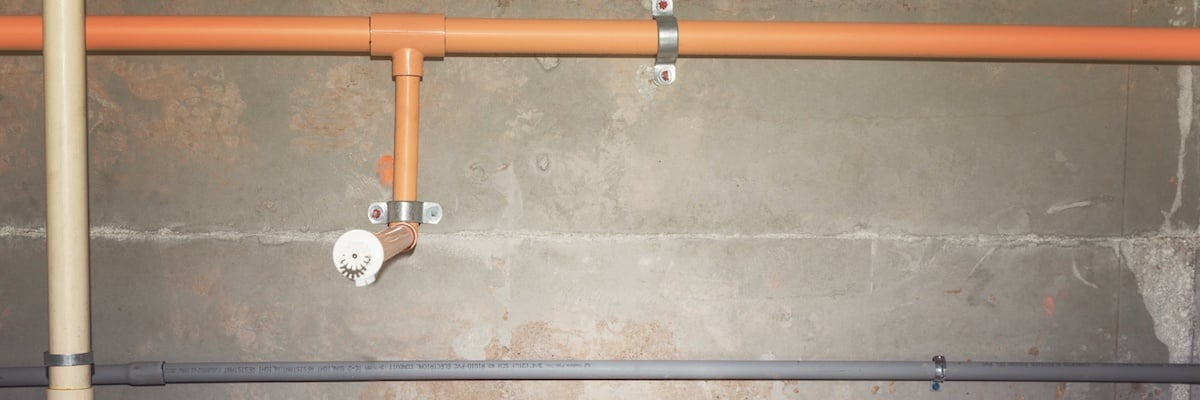
CPVC Fire Sprinkler Systems - Top 3 Installation and Maintenance Advantages
BlazeMaster vs. Steel | on March 8th, 2021
Steel piping have been used for all kinds of conventional piping for ages, hence, they have been the material of choice for fire sprinkler systems worldwide - that is until CPVC pipes came and changed the fire sprinkler industry.
30 years ago, BlazeMaster® CPVC pipes and fittings revolutionized the fire sprinkler system industry for the better. Since then this lightweight thermoplastic has been the preferred choice for fire sprinkler specifiers, designers, and installers because of its significant advantages over its metallic counterparts.
Let's take a look at how BlazeMaster® CPVC fire sprinkler systems are advantageous from their ease of installation to their ongoing upkeep and overall maintenance:
Installation and Durability
CPVC has a ubiquitous edge over steel in both the installation process and joint security:
Installation Process
CPVC uses a custom solvent cement to join fire sprinklers and its fittings, which can be completed on-site with common, inexpensive tools by any installer having basic training. Steel on the other hand requires specialized welding equipment and heat, which creates the risk for work hazard and makes for an overall less safe working environment. The welding process also requires skilled and certified labourers to ensure piping joints are properly aligned.
Joint Security
Solvent cement fuses the pipe and fittings, creating one continuous piece of CPVC making it the strongest part of the installed system. On the other hand, steel piping is heat welded together, limiting the strength of the overall system, and creating a bead around the inside of the pipe that negatively impacts the flow-rate of liquid (hydraulic calculation) and increases pressure. The heat during welding also eats away the protective zinc layer over GI pipes, which increases chances of corrosion at these joints.
Furthermore, BlazeMaster® pipes & fittings have the same raw material source and also manufacturing source while also being UL listed. On the other hand, Steel Pipes and fittings used in Indian projects invariably has different manufacturers- and this mis-match makes the overall quality of system and the installation uncertain.
Chlorine Resistance
Water treatment processes use chlorine and chlorine dioxide to disinfect drinking water, which can eat away at the interior of pipes.
Steel pipes do not resist chlorine well, which means that the trace amounts of chlorine flowing through the pipes will eat away at the walls, make the pipe lose its tensile strength, or lead to fire sprinkler system failure over time. As the walls become thinner and the material loses strength, the risk of leaks and pipe damage increases.
CPVC is a chlorinated material, enabling it to stand up very well to chlorine exposure over long periods. BlazeMaster® CPVC ensures long-term structural integrity and strength of the material.
Corrosion Resistance
Corrosion and scale buildup are primary maintenance concerns for a steel fire sprinkler system.
The combination of water, chemicals, and oxygen can, over time, cause corrosion that leads to pinhole leaks in steel pipe fire sprinkler systems. Pipes with pinhole leaks must be replaced, not patched, to ensure system integrity. It is self-explanatory how maintenance time and costs increase as a repair is required.
In another scenario, scale build-up from the minerals associated with hard water can attach to steel pipe walls. This can limit the flow of water or, worse, prevent the flow of water entirely.
BlazeMaster® CPVC piping resists scaling and corrosion for up to 50 years of service life – even in salt air environments of India with fluctuating water pH levels.
Additional Considerations
It's important to note that not all CPVC fire-sprinkler pipes and fittings are created equal.
BlazeMaster® CPVC is specifically made to optimize performance for all sorts of light-hazard applications. They are designed to meet and exceed existing code and approval requirements.
BlazeMaster® CPVC fire sprinkler system for buildings and other light-hazard applications has demonstrated through both laboratory tests and actual installations that it offers long-term durability and performance, as well as greater cost efficiencies when specified in fire sprinkler systems instead of traditional metallic piping components. This provides end-users with a sprinkler system that is cost-effective, safe, and reliable.
For more details, contact us.




